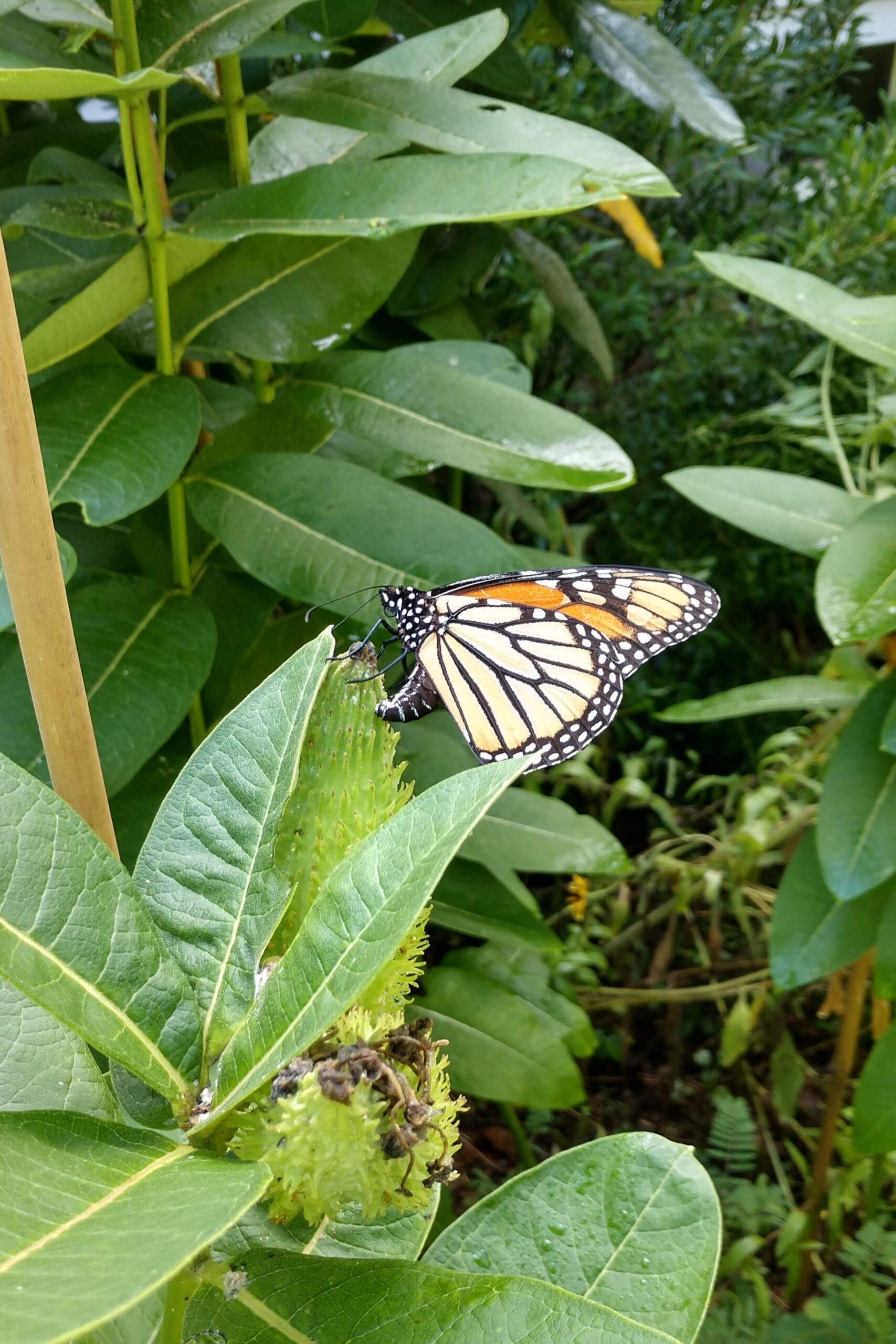Monarch Overwintering Population Count Results for 2021-22
A migrating Monarch butterfly shows its new tag that will help scientists identify and protect their migration routes. Biophilia Foundation grantee Chesapeake Wildlife Heritage tagged this Monarch in partnership with the University of Kansas’s Monarch Watch program.
Photo courtesy of Chris Pupke.
06
Chesapeake Bay
Restoration
The 2021-22 Eastern Monarch Population Count has been completed. It shows mixed results. While the population has increased slightly, it remains well below their population levels of just 20 years ago, and, more importantly, below the projected size needed to sustain the population.
The eastern population of Monarch butterflies (Danaus plexippus) overwinters in the Oyamel fir forests in the mountains of Central Mexico. These amazing insects migrate from Mexico to the United States and Canada, and back to Mexico in one year but over the course of several generations. [More on their remarkable journey can be found in Biophilia’s blog.]
The count is conducted during the winter months when almost the entire eastern population of Monarchs is concentrated in the Monarch preserves in Mexico. The count does not focus the number of individuals; a task rendered nearly impossible by the incredible density of Monarch roosts. Rather teams track the land coverage of those roosts and calculate how many hectares the population covers. More on how scientists conduct the count can be found at the Monarch Joint Venture website.

A Monarch butterfly oviposits (lays an egg) on a common milkweed plant.
Photo courtesy of Chris Pupke.
The winter 2022 Monarch population covered 2.84 hectares at 10 colonies. This is a slight increase from 2021’s result of 2.1 hectares and nearly matches the 2020 result of 2.83 hectares. Twenty years ago, the count was at 9.36 hectares. A March 2016 report published by “Nature” warned that the eastern Monarch population needed to be above 6.0 hectares to have a sustaining population (Semmens et. al.). The 2021-22 count was conducted by an alliance that includes World Wildlife Fund, Telmex Telcel Foundation and the National Commission of Natural Protected Areas.
Meanwhile, the count of the western population of Monarchs conducted by the Xerces Society produced a similar result. Western Monarchs live west of the Rocky Mountains and overwinter primarily in California. The 2021-22 overwintering count found 151,168 individual monarchs at 209 overwintering sites. While populations are trending up for Western Monarchs, their population is estimated to have declined by 95% since the 1980’s and they also face the threat of extinction.
You can help support Monarch populations by planting common milkweed for hungry caterpillars, establishing flowering plants throughout the summer and fall to provide nectar for hungry butterflies, working to provide and protect habitat for Monarchs throughout their range, and lobbying your government to address climate change which is an existential threat to Monarchs.

Recent Comments